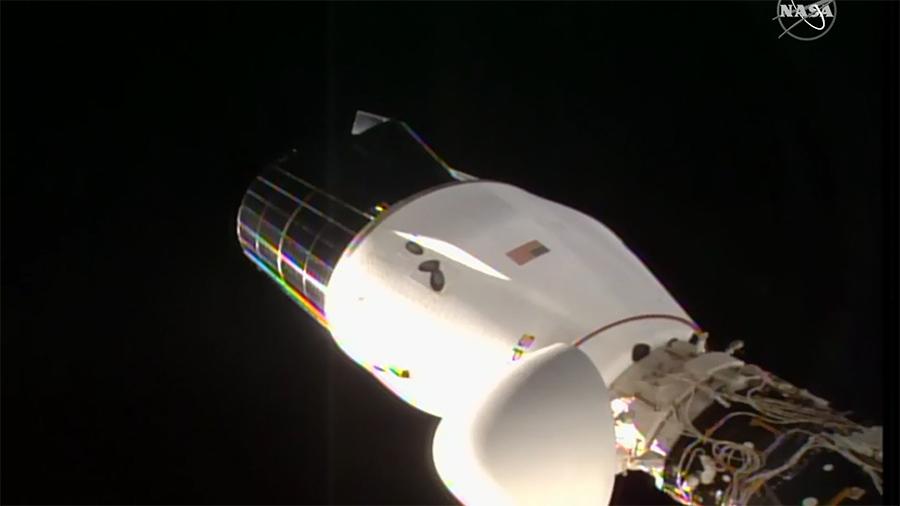Dragon Departure Live Now on NASA TV

NASA Television and the agency’s website are broadcasting live coverage for the departure of an upgraded SpaceX cargo Dragon spacecraft from the International Space Station. NASA astronaut Victor Glover is monitoring the activity aboard the station.
The targeted undocking time has been moved to optimize communication coverage; commands to undock will be sent at 9 a.m. EST with physical separation of the two spacecraft about 9:05 a.m.
The undocking will be the first time a U.S. commercial cargo craft autonomously departs from the station’s International Docking Adapter.
The spacecraft is filled with more than 4,400 pounds of valuable scientific experiments and other cargo to return to Earth to complete SpaceX’s 21st commercial resupply services mission for NASA.
Dragon will fire its thrusters to move a safe distance from the station’s space-facing port of the Harmony module and exit the area of the space station to begin its return to Earth. On Wednesday, Dragon will initiate a deorbit burn to begin its re-entry sequence into Earth’s atmosphere then make a parachute-assisted splashdown around 8:27 p.m. – the first return of a cargo resupply spacecraft off the Florida coast west of Tampa. The deorbit burn and splashdown will not be broadcast.
For departure coverage and more information about the mission, visit: https://blogs.nasa.gov/spacestation. Get space station news, images and features via social media on Instagram at: @iss, ISS on Facebook, and on Twitter @Space_Station and @ISS_Research.
from Space Station https://ift.tt/2LEkuQq
Comments
Post a Comment